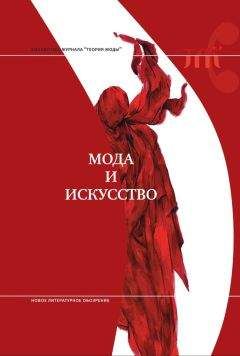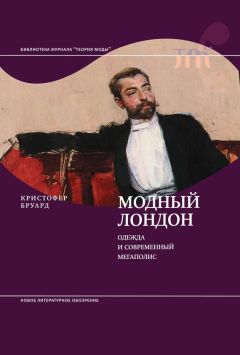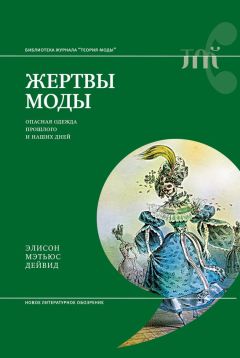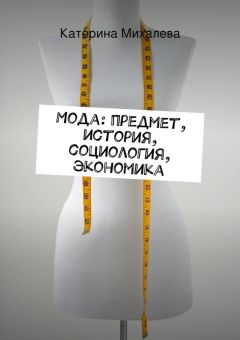Foster H. The Return of the Real: The AvantGarde at the End of the Century. Cambridge, MA, 1996. P. 120.
Koolhaas R. Projects for Prada Part 1. Milan: Fondazione Prada, 2001.
De la Peña C. Ready-to-Wear Globalism: Mediating Materials and Prada’s GPS. Winterthur Portfolio. 2003. No. 38. 2/3. Pp. 109–129.
Baudrillard J. Simulations. N.Y., 1983 (Бодрийяр Ж. Симулякры и симуляции. М., 2015).
Davis M. Fortress L.A. // The City Reader / LeGates R.T., Stout F. London; N.Y., 2000. Pp. 193–198.
Zukin S. Landscapes of Power: From Detroit to Disney World. Berkeley, 1991.
Koolhaas R. Junkspace // Harvard Design School Guide to Shopping. Cologne; N.Y.; London, 2001.
Sorkin M. Brand Aid // Harvard Design Magazine. 2002/03. No. 17. Pp. 4–9.
Jameson F. Postmodernism, or the Cultural Logic of Late Capitalism. London, 1991. P. 204.
Kimmelman M. The Patroness // New York Times. 2008. March 23.
Ibid.
Chin-Tao Wu. Privatising Culture: Corporate Art Intervention since the 1980s. London; N.Y., 2002. P. 125.
Warke V. “In” Architecture: Observing the Mechanisms of Fashion // Architecture: In Fashion / Ed. by Fausch D., Singley P., El-Khoury R., Efrat Z. N.Y., 1994. Pp. 124–147.
Bourdieu P. Distinction: A Social Critique of the Judgement of Taste. London, 1984. P. 6. Приводится в переводе Н. Шматко.
Roche D. La culture des apparences. Paris, 1989. P. 539.
Newton S.M. The Study of Costume as an Aid to the Dating of Italian Renaissance Paintings // The Bulletin of the Needle and Bobbin Club. 1953. No. 37. P. 3.
Ruskin J. Modern Painters. Orpington, Kent, England, 1886. Vol. 5. P. 200.
Другим примером может служить творчество художников-дизайнеров, принадлежавших к движению «Сецессион» в конце XIX – начале XX в., или художников из группы Блумсбери, создававших ткани, мебель и керамику в мастерских «Омега» (Omega) в Англии, основанных художником и искусствоведом Роджером Фраем в 1913 г.
Fernie E. Art History and Its Methods: A Critical Anthology. London, 1996. P. 19.
Я рассматриваю моду как лишь один (хотя, надо признаться, очень важный) аспект костюма в самом широком понимании. Исследование истории костюма, несомненно, требует внимания к любым видам одежды, принадлежащей представителям любых социальных классов и надевавшейся в самых разнообразных случаях. Речь идет не только о парадной и повседневной одежде, но и о профессиональном и церемониальном облачении, о разного рода униформе, о традиционном и региональном костюме и т.д. И разумеется, следует уделять внимание тому, как относились к одежде и как ее осмысляли представители разных эпох и культур.
В счетах или описях королевского/придворного гардероба действительно встречаются имена поставщиков тканей, но это неудивительно, учитывая, что стоимость одежды гораздо больше определялась ценой материала, нежели стоимостью дизайна или пошива. Также иногда (хотя гораздо реже) упоминаются имена портных и специализированных работников, таких как вышивальщицы, скорняки, швеи и т.д.; однако до XIX в. мы не встречаем никаких сведений о кутюрье/модельерах, отвечавших за разработку костюма как единого целого.
Eagleton T. The Significance of Theory. Oxford, 1990. P. 25.
Зонтаг С. Против интерпретации и другие эссе. М., 2014.
Bourdieu P. The Rules of Art: Genesis and Structure of the Literary Field. Cambridge, UK, 1996. Pp. 177–178.
По оригиналу (Холландер Э. Взгляд сквозь одежду. М., 2015. С. 10).
По оригиналу (там же. С. 10, 518).
По оригиналу (там же. С. 518).
См.: Ribeiro A. Utopian Dress // Chic Thrills: A Fashion Reader / Ed. by J. Ash J., E. Wilson E. London, 1992.
Newton S.M. The Study of Costume as an Aid to the Dating of Italian Renaissance Paintings // The Bulletin of the Needle and Bobbin Club. 1953. No. 37. P. 25.
Hugo Boss, цит. по: Stallabrass J. Art Incorporated: The Story of Contemporary Art. Oxford: Oxford University Press, 2004. P. 83.
Аппадураи дает свою трактовку культурной активности, известной как социальное воображаемое. По Аппадураи, существует пять измерений глобальных культурных потоков: этнопространство, медиапространство, технопространство, финансовое пространство, пространство идей. Он утверждает, что эти потоки пересекаются, конфликтуют и накладываются друг на друга, образуя сложные системы взаимодействий, что провоцирует общую нестабильность и разрушает модели глобализации. См.: Appadurai A. Disjuncture and Difference in the Global Cultural Economy // Public Culture. 1990. No. 2.2. Pp. 1–24.
Benjamin W. Illuminations / Trans. by Arendt H. London, 1999. P. 219 (Беньямин В. Произведение искусства в эпоху его технической воспроизводимости. Избранные эссе. М., 1996. С. 33).
Ralph Lauren (2010). 4d.ralphlauren.com/.
Ralph Lauren 4DMapping Projection: Where 5 Senses Meet. 2010. November 18. popsop.com/40589.
Benjamin W. Theses on the Philosophy of History // Illuminations / Ed. by Arendt H., trans. by Zohn H. London, 1992. P. 263 (Беньямин В. о понятии истории / Пер. с нем. и коммент. С. Ромашко // НЛО. 2000. № 46. С. 86).
Benjamin W. цит. по: Lehmann U. Tiger Sprung: Fashion in Modernity. Boston, 2007. P. 240.
Wilson E. Fashion and Modernity // Fashion and Modernity / Ed. by Breward C., Evans C. Oxford, 2005. P. 11.
Wilson E. Magic Fashion // Fashion Theory: The Journal of Dress, Body & Culture. 2004. Vol. 8.4. Pp. 375–386.
Benjamin W. Theses on the Philosophy of History // Illuminations / Ed. by Arendt H., trans. by Zohn H. London, 1992. P. 681 (Беньямин В. о понятии истории / Пер. С. Ромашко // НЛО. 2000. № 46. С. 82).
Diane Pernet on Tavi, Fashion Film and the Future of Catwalks. 2008. fashionista.com/2010/08/diane-pernet-on-tavi-fashion-film-and-the-future-of-catwalks.
Lipovetsky G. The Empire of Fashion. Dressing Modern Democracy / Trans. by Catherine Porter. Princeton, NJ, 1994. P. 174 (Липовецкий Ж. Империя эфемерного. Мода и ее судьба в современном обществе. М.: Новое литературное обозрение, 2012. С. 237).
Debord G. The Society of the Spectacle / Trans. by Ken Knab. London, 1983. P. 7 (Дебор Г. Общество спектакля. М., 1999. С. 23).
Baudrillard J. Symbolic Exchange and Death. London, 1993. P. 62.
См. также: Evans C. Fashion at the Edge: Spectacle, Modernity and Deathliness. New Haven, CT; London, 2009.
Leopardi G. Dialogue between Fashion and Death / Trans. by Giovani Cecchetti. 1824; London: Penguin, 1982. Pp. 7–8 (Леопарди Д. Нравственные очерки. Дневник размышлений. Мысли. М., 2000. С. 36).
Ibid.
Benjamin W. Fashion // The Arcades Project / Trans. by Eiland H., McLaughlin K. London; Cambridge, MA, 1999. P. 71 [T. 4,4].
Ibid. P. 63 [T. 1,4].
Evans C. Fashion at the Edge: Spectacle, Modernity and Deathliness. New Haven, CT; London, 2009. P. 6.
Haraway D. Simians, Cyborgs, and Women: The Reinvention of Nature. London, 1991. P. 1.
См.: Manovich L. The Language of New Media. Cambridge, MA; London, 2002.
Appadurai A. Disjuncture and Difference in the Global Cultural Economy // Public Culture. 1990. No. 2.2. P. 5.
Evans C. John Galliano: Modernity and Spectacle SHOWstudio. 2001. 15. www.showstudio.com.
См.: Ashelford J. The Art of Dress: Clothes Through History 1500–1914. London, 1996; Cumming V. Understanding Fashion History. London, 2004; Stevenson N.J. The Fashion Retrospective // Fashion Theory: The Journal of Dress, Body & Culture. 2008. Vol. 12.2. Pp. 219–235; Taylor L. The Study of Dress History. Manchester, UK, 2002, и Establishing Dress History Manchester, UK, 2004; Williams V. A Heady Relationship: Fashion Photography and the Museum, 1979 to the Present // Fashion Theory: The Journal of Dress, Body & Culture. 2008. Vol. 12.2. Pp. 197–218.
Richards T. The Commodity Culture of Victorian England: Advertising and Spectacle, 1851–1914. London, 1990. P. 17.
Greenhalgh P. Ephemeral Vistas: The Expositions Universelles, Great Exhibitions and World’s Fairs, 1851–1939. Manchester, UK, 1988. P. 143.
Richards T. The Commodity Culture of Victorian England: Advertising and Spectacle, 1851–1914. London, 1990. P. 39.
Good News for the Ladies // Lady’s Newspaper. 1847. January 2. P. 2.
Cumming V. Understanding Fashion History. London, 2004.
Van Wesemael P. Architecture of Instruction and Delight: A Socio-historic Analysis of World Exhibitions as a Didactic Phenomenon (1798–1851–1970). Rotterdam, 2001. P. 135.
Speaking to the Eye // Economist. 1851. May 17. P. 5.
The Great Exhibition // Times. 1851. June 7. P. 5.
Jury Reports: Reports by the Juries on the Subjects in the Thirty Classes into Which the Exhibition Was Divided. London, 1852. Class XX. P. 482.
Exhibition Notes No. 4 // Illustrated London News. 1851. August 2. P. 166.
Great Exhibition of the Work of Industry of All Nations. Official Descriptive and Illustrated Catalogue: By Authority of the Royal Commission. In 3 Vls. London, 1851. Section III. Class 20. (20) (2Y). P. 575.
Popular Guide to the Great Exhibition of the Works of Industry of All Nations: With a Plan of the Building, Rules for Visitors, and Suggestions for the Guidance of Large Parties Visiting the Exhibition. London, 1851. n.p.
Jury Reports: Reports by the Juries on the Subjects in the Thirty Classes into Which the Exhibition Was Divided. London, 1852. Class XX. P. 481.
Ими восхищался Густав Флобер, посещавший выставку вместе со своей матерью.
The Guide of the Guides for Strangers and Foreigners in London during 1851: To Which Is Added the Royal Albert Hand Map of London, Which Requires No Folding, and by Which the Stranger Can at Once Tell What Part of London He May Be in… London, 1851. n.p.
A Visit to the Great Exhibition, Price Sixpence, By One of the Exhibitors. London, 1851. P. 20.
Literature // Lady’s Newspaper. 1851. May 10. P. 262.
Good News for the Ladies // Lady’s Newspaper. 1847. January 2. P. 2.
Ledbetter K. Bonnets and Rebellions: Imperialism in The Lady’s Newspaper // Victorian Periodicals Review. 2004. No. 37. 3. P. 252.
Boyer C. The City of Collective Memory: Its Historical Imagery and Architectural Entertainments. Cambridge, MA, 1994. P. 259.




